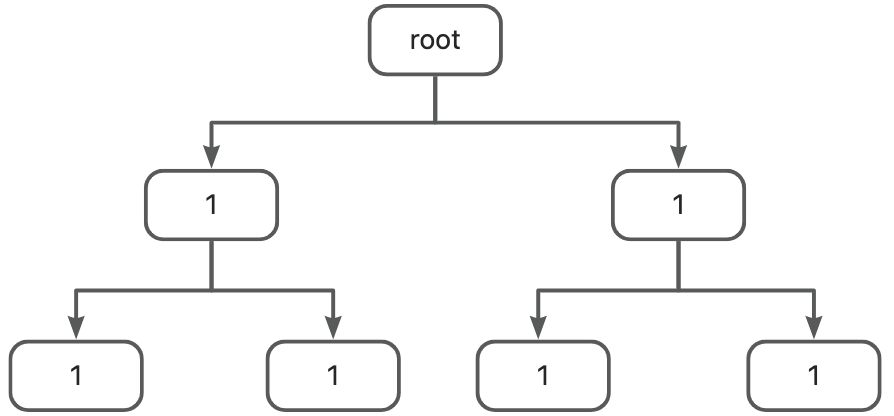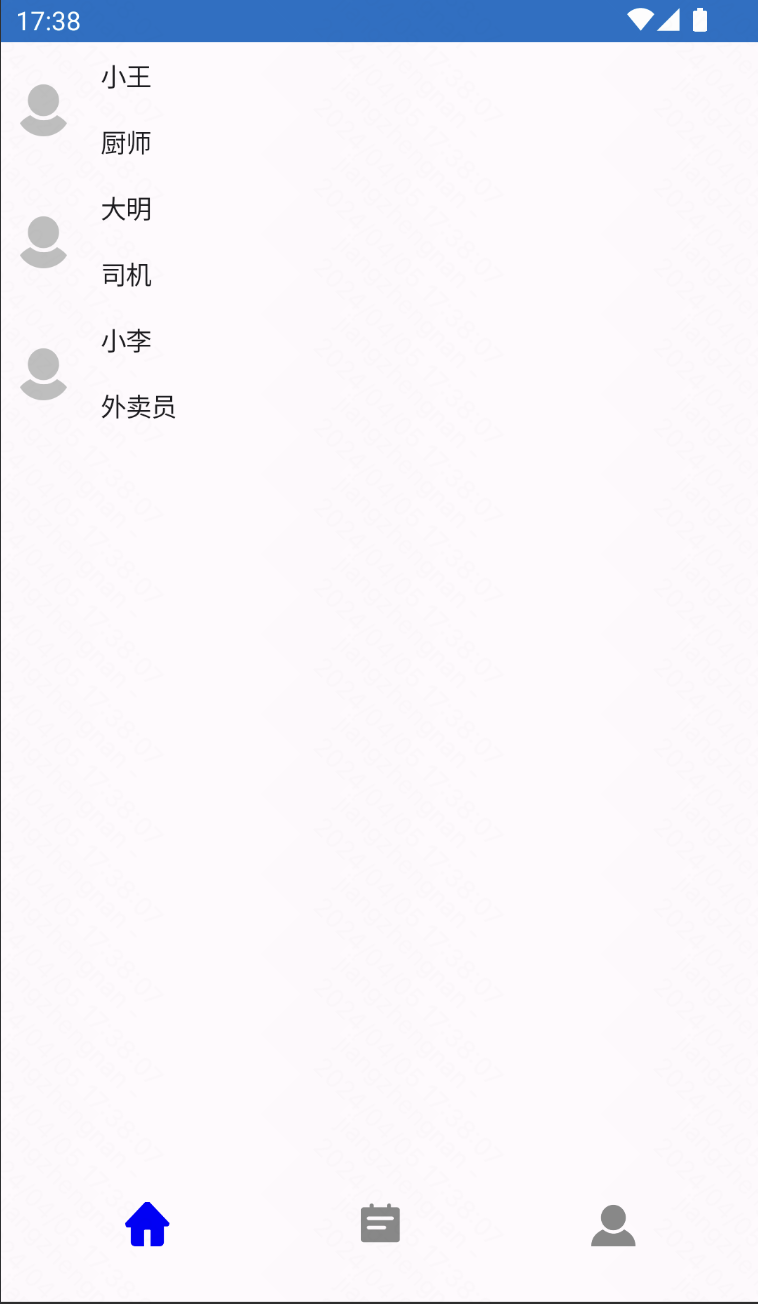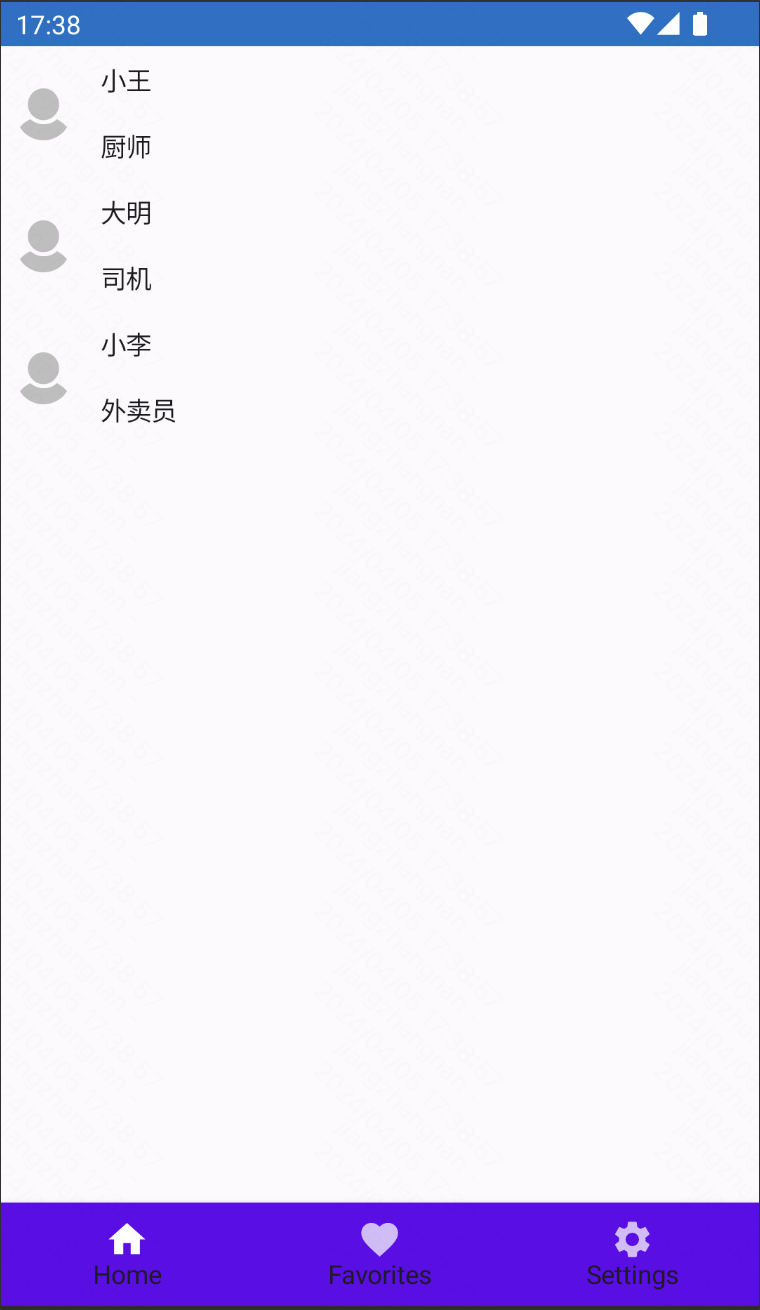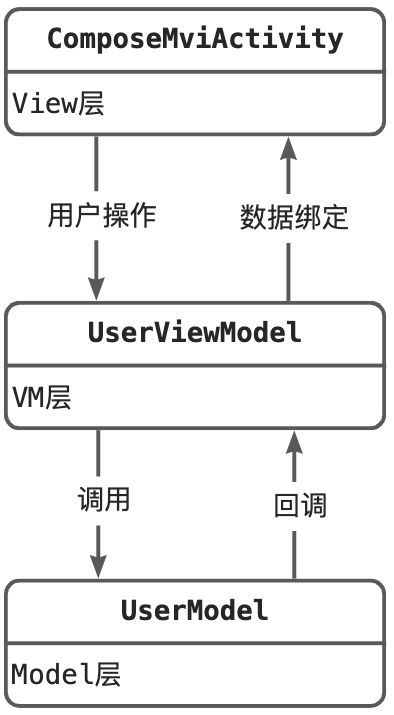基本概念

Compose 名称由来
众所周知,继承在功能拓展上表现的很脆弱,容易类、函数爆炸,通过代理和包装进行组合会更健壮。
Compose 意为组合,使用上也是把 Compose 函数以 模拟函数调用层级关系的方式 组合到一起,最终映射为 ViewTree。
声明示UI与命名式UI
命名式UI:
需要手动更新。
<?xml version="1.0" encoding="utf-8"?>
<LinearLayout xmlns:android="http://schemas.android.com/apk/res/android"android:layout_width="match_parent"android:layout_height="match_parent"><TextViewandroid:text="Hello"android:layout_width="wrap_content"android:layout_height="wrap_content"/><ImageViewandroid:src="..."android:layout_width="wrap_content"android:layout_height="wrap_content"/></LinearLayout>声明式UI:
只需要把界面设置出来,不需要手动更新。(随着数据自动更新)
Column() {Text(text = "Hello")Image(bitmap = ...)
}声明式UI如何实现自动订阅
var text by mutableStateOf("hello")//与ui绑定Text(text = text)//赋值,ui会收到订阅LaunchedEffect(Unit) {text = "good"}Compose和databind的区别
databinding只能更新界面元素中的值,而compose可以更新任何内容,包括结构。
//文案是否可以被显示 var ifShow by mutableStateOf(false) var text by mutableStateOf("hello")if (ifShow) {Text(text = text)}比如这里if(showImage) ,如果为false,则Text从视图结构里被移除,跟原本的setVisible是有区别的。
关于层级嵌套
Android布局嵌套层级太深,会导致性能损耗,因为重复测量。
(比如父view是Linelayout,宽度为wrap_content,会取子view的最大宽度为宽度。如果有一个子View为match_parent,就会先以0为强制宽度测量一次这个子view,再测量其他子view的最大宽度,再以最大宽度测量这个match_parent的子view得出最终尺寸。在有多重嵌套的场景下,测量次数会指数级攀升,测量次数 = O^2n,O为层级数,因此每增加一层,布局时间翻一倍)

Compose规避了这个问题,因为在Compose中,子项只能测量一次,测量两次就会引发运行时异常。

Intrinsic Measurement 固有尺寸测量。
Compose允许父组件在测量前,先粗略测量子组件的最大最小大小尺寸,再统一进行测量。测量次数 = O^n。
因此在Compose中,N级嵌套布局,和同一层级嵌套布局,性能是一样的。
实现简单APP主页
实现一个列表
实现一个竖向列表,item为头像+昵称
首先需要定义好数据源:
//数据源
data class User(val name: String, val job: String)
object UserData {val messages = listOf(User("小王", "厨师"),User("大明", "司机"),User("小李 ", "外卖员"),)
}然后实现每一列的布局ui:
//ui item
@Composable
private fun UserItem(user: User) {//Row 是以行排布的元素组件,列是ColumnRow(modifier = Modifier.padding(all = 8.dp),verticalAlignment = Alignment.CenterVertically) {//头像Image(painter = painterResource(id = R.mipmap.mine),contentDescription = null,modifier = Modifier.size(30.dp).clip(CircleShape))Spacer(Modifier.padding(horizontal = 8.dp))Column() {//名字Text(text = user.name)//间隔Spacer(Modifier.padding(vertical = 8.dp))//职业Text(text = user.job,)}}
}最后,需要将布局Item组成一个Conversation列表,加入到Activity的布局中:
//Activity
class ComposeListActivity : ComponentActivity() {override fun onCreate(savedInstanceState: Bundle?) {super.onCreate(savedInstanceState)setContent {Conversation(userList = messages)}}
}//实现一个列表
@Composable
fun Conversation(userList: List<User>) {LazyColumn {items(userList) { it ->UserItem(user = it)}}
}实现底部导航栏
首先新建一个Activity,在setContent中声明底部导航栏(结构为一个Row+三个Icon)
class ComposeHomeActivity : ComponentActivity() {override fun onCreate(savedInstanceState: Bundle?) {super.onCreate(savedInstanceState)setContent {NavBar()}}@Composablefun NavBar() {Row {Icon(painter = painterResource(id = R.mipmap.home), contentDescription = null)Icon(painter = painterResource(id = R.mipmap.project), contentDescription = null)Icon(painter = painterResource(id = R.mipmap.mine), contentDescription = null)}}
}此时运行的效果是这样的:

略显丑陋,接下来给它们补充一些间距,布局,以及颜色:
@Composable
fun CustomApp() {Row(Modifier.height(84.dp).padding(16.dp),verticalAlignment = Alignment.CenterVertically) {NavItem(iconRes = R.mipmap.home, desc = "主页", Color.Blue)NavItem(iconRes = R.mipmap.project, desc = "项目", Color.Gray)NavItem(iconRes = R.mipmap.mine, desc = "我的", Color.Gray)}
}// 避免给每个Icon重复设置,将Icon抽成独立的自定义参数组件
@Composable
fun RowScope.NavItem(@DrawableRes iconRes: Int, desc: String, tint: Color) {Icon(painter = painterResource(id = iconRes), contentDescription = desc,Modifier.size(24.dp).weight(1f), //宽度比重,必须要在RowScope下才能设置。tint = tint)
}运行:

可以看到效果好了很多。那么如何实现不同页面之间的切换呢?
首先定义好三个不同的页面:
@Composablefun ProjectScreen(modifier: Modifier = Modifier) {Box(modifier.fillMaxSize()) {Text(text = "Favorites Screen", modifier = Modifier.align(Alignment.Center))}}@Composablefun UserScreen(modifier: Modifier = Modifier) {Box(modifier.fillMaxSize()) {Text(text = "Settings Screen", modifier = Modifier.align(Alignment.Center))}}@Composablefun HomeScreen(userList: List<User>) {//这里是前面实现的列表页面LazyColumn {items(userList) { it ->UserItem(user = it)}}}然后,在底部栏按钮外部,增加Scaffold组件
Scaffold:一个组合元素,可以轻松地在同一个位置添加AppBar、BottomAppBar等。
- 增加页面数据类Screen,用来标识三个页面。
- 增加currentScreen变量,维护当前页面状态。
- 给每一个NavItem设置点击监听事件,在每一个item点击时设置currentScreen的变化。
- Scaffold收到currentScreen变化通知,切换不同的页面。
sealed class Screen {object Home : Screen()object Project : Screen()object User : Screen()}@Composablefun CustomApp() {//维护当前页面状态var currentScreen by remember { mutableStateOf<Screen>(Screen.Home) }Scaffold(bottomBar = {Row(Modifier.height(84.dp).padding(16.dp),verticalAlignment = Alignment.CenterVertically) {NavItem(iconRes = R.mipmap.home, desc = "主页", Color.Blue) {currentScreen = Screen.Home}NavItem(iconRes = R.mipmap.project, desc = "项目", Color.Gray) {currentScreen = Screen.Project}NavItem(iconRes = R.mipmap.mine, desc = "我的", Color.Gray) {currentScreen = Screen.User}}}) { innerPadding ->when (currentScreen) {Screen.Home -> HomeScreen(UserData.messages)Screen.Project -> ProjectScreen(Modifier.padding(innerPadding))Screen.User -> UserScreen(Modifier.padding(innerPadding))}}}// 避免给每个Icon重复设置,将Icon抽成独立的自定义参数组件@Composablefun RowScope.NavItem(@DrawableRes iconRes: Int,desc: String,tint: Color,click: () -> Unit,) {Icon(painter = painterResource(id = iconRes), contentDescription = desc,Modifier.size(24.dp).weight(1f).clickable {click.invoke()}, //宽度比重,必须要在RowScope下才能设置。tint = tint,)}实现效果:


底部栏BottomNavigation
比起自己实现导航栏+左右滑动页面,最好采用系统api来实现,效果和稳定性更优。这里可以先引入Navigation的库:
//Navigation
implementation "androidx.navigation:navigation-compose:2.8.0-alpha06"结合Jetpack Compose的一些常用元素:
BottomNavigation:用于创建底部导航栏。
BottomNavigationItem:底部导航栏的一个单独项。
@Composablefun MyApp() {var currentScreen by remember { mutableStateOf<Screen>(Screen.Home) }Scaffold(bottomBar = {BottomNavigation {BottomNavigationItem(icon = { Icon(Icons.Filled.Home, contentDescription = "Home") },label = { Text("Home") },selected = currentScreen == Screen.Home,onClick = { currentScreen = Screen.Home })BottomNavigationItem(icon = { Icon(Icons.Filled.Favorite, contentDescription = "Favorites") },label = { Text("Favorites") },selected = currentScreen == Screen.Project,onClick = { currentScreen = Screen.Project })BottomNavigationItem(icon = { Icon(Icons.Filled.Settings, contentDescription = "Settings") },label = { Text("Settings") },selected = currentScreen == Screen.User,onClick = { currentScreen = Screen.User })}}) { innerPadding ->when (currentScreen) {Screen.Home -> HomeScreen(Modifier.padding(innerPadding))Screen.Project -> ProjectScreen(Modifier.padding(innerPadding))Screen.User -> UserScreen(Modifier.padding(innerPadding))}}}实现效果:

Android原生自定义View在Compose中使用
在第二个页面ProjectScreen中,尝试加入之前写好的自定义View:
@Composablefun ProjectScreen(modifier: Modifier = Modifier) {AndroidView(modifier = Modifier.size(150.dp), factory = { context ->// Creates viewCircularAnimProgressView(context)},update = { view ->// 视图已膨胀或此块中读取的状态已更新// 如有必要,在此处添加逻辑// 由于selectedItem在此处阅读,AndroidView将重新组合// 每当状态发生变化时// 撰写示例->查看通信})}可以通过AndroidView组件实现,在factory中返回通过原生方式实现的自定义View即可实现。
并且在状态更新时,会回调update事件,可以在这里对View进行一些刷新操作。
运行效果:

与MVI结合使用
带来的优化
举个栗子:
用MVI实现一个计数器,通常需要定义一个状态类来存储计数器的状态:
状态类CounterState
事件类CounterEvent:来表示计数器的事件。
数据类CounterViewModel:用于处理计数器应用程序的业务逻辑。
//状态
data class CounterState(val count: Int)//事件
sealed class CounterEvent {object IncrementCounter : CounterEvent()
}//ViewModel
class CounterViewModel : ViewModel() {private val _state = MutableLiveData(CounterState(0))val state: LiveData<CounterState> = _statefun handleEvent(event: CounterEvent) {when (event) {is CounterEvent.IncrementCounter -> incrementCounter()}}private fun incrementCounter() {val currentCount = _state.value?.count ?: 0_state.value = CounterState(currentCount + 1)}
}// UI databind部分
//1.在xml中定义 btn 和 text...
val button = findViewById(R.id.btn)
val text = findViewById(R.id.text)
// 2.显示绑定viewmodel.state.observe(this) {count->btn.text = "Click Count: $count"}//3.点击监听button.setOnclickListener {viewmodel.handleEvent(...)}UI部分如果使用Compose实现,代码会比较简洁,因为在UI初始化的时候就建立了绑定。
@Composable
fun Counter() { Button(onClick = { viewmodel.handleEvent(...) }) //点击 Text(text = "Click Count: " + viewmodel.state.value.count) //显示
}这样做的优点是,保证了框架的唯一性
由于每个view是在一开始的时候就被数据源赋值的,无法被多处调用随意修改,所以保证了框架不会被随意打乱。更好的保证了代码的低耦合等特点。
MVI结合Compose
举个栗子,用MVI+Compose实现一个登录功能,整体结构如下:

class ComposeMviActivity : ComponentActivity() {private lateinit var userViewModel: UserViewModeloverride fun onCreate(savedInstanceState: Bundle?) {super.onCreate(savedInstanceState)userViewModel =ViewModelProvider(this, UserViewModelFactory(application)).get(UserViewModel::class.java)setContent {val userState = userViewModel.state.valueval username = remember { mutableStateOf(TextFieldValue("")) }val password = remember { mutableStateOf(TextFieldValue("")) }Column(modifier = Modifier.padding(16.dp)) {Text(text = "Welcome")TextField(value = username.value,onValueChange = { username.value = it })TextField(value = password.value,onValueChange = { password.value = it },visualTransformation = if (password.value.text.isNotEmpty()) PasswordVisualTransformation() else VisualTransformation.None,keyboardOptions = KeyboardOptions(keyboardType = KeyboardType.Password),)Button(onClick = {userViewModel.onIntent(UserIntent.Login(username.value.text,password.value.text))},modifier = Modifier.padding(top = 8.dp)) {Text(text = "Login")}Button(onClick = { userViewModel.onIntent(UserIntent.Logout) },modifier = Modifier.padding(top = 8.dp)) {Text(text = "Logout")}if (userState.success) {Text(text = "登录成功")} else {Text(text = "未登录:" + userState.error)}}}}}class UserViewModelFactory(private val application: Application) :ViewModelProvider.AndroidViewModelFactory(application) {override fun <T : ViewModel> create(modelClass: Class<T>): T {//val sharedPreferences = PreferenceManager.getDefaultSharedPreferences(application)val userModel = UserModel()return UserViewModel(userModel) as T}
}sealed class UserIntent {data class Login(val username: String, val password: String) : UserIntent()object Logout: UserIntent()
}data class UserViewState(val success: Boolean = false, val error: String = "")class UserModel() {fun login(username: String, password: String): Boolean {return "123" == username && "456" == password}fun logout() {//清空本地账号密码}
}class UserViewModel(private val userModel: UserModel): ViewModel() {private val _state = mutableStateOf(UserViewState())val state: State<UserViewState> = _statefun onIntent(intent: UserIntent) {when(intent) {is UserIntent.Login -> {val isSuccessful = userModel.login(intent.username, intent.password)if (isSuccessful) {_state.value = UserViewState(success = true)} else {_state.value = UserViewState(error = "Invalid username or password")}}is UserIntent.Logout -> {userModel.logout()_state.value = UserViewState(success = true)}}}
}总结
首先掌握Compose的重要性不言而喻,SwiftUI也好,Flutter也好,声明式UI一统移动端是大势所趋。
写之前笔者对Compose的了解基本为0,作为Android开发,之前也只是写过一点flutter的demo,但是从开始学习到完成本文一共花了大约不到1天,由此可见Compose的入手门槛其实并不高,只要花时间看一看写一写,是比较容易快速上手的。
但是深入理解依然是需要花功夫和心血的,整理了一些后续的学习方向:
● Compose实现自定义View
● Compose动画
● Compose绘制原理(https://kstack.corp.kuaishou.com/article/6353)
● Compose事件分发
● Compose滑动嵌套
● Compose Widget Lifecycle
● Compose UI 交互刷新流程
会在以后的工作和学习过程中,持续补充,希望感兴趣的同学可以一起加入进来,共同进步。
最后~感谢读到这里,再会!
参考资料:
Jetpack Compose | Android Developers——Compose官方教程
写在开头 | 你好 Compose——jetpack compose中文教程


】)
)















